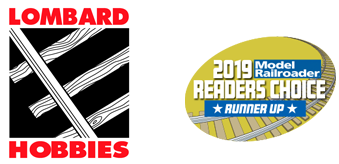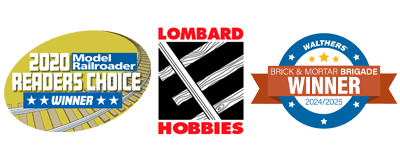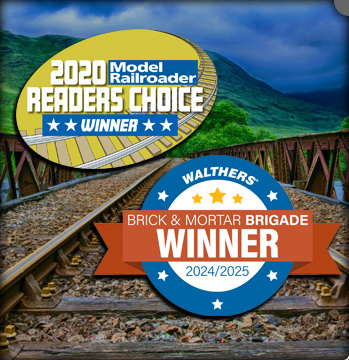Atlas HO
Atlas Master HO 10003972 Silver Series DCC Ready ALCO HH600/HH660 Locomotive Erie Lackawanna ERIE #305
- In Stock:
- 2
- Scale:
- HO
- SKU:
- ATL10003972
- Availability:
- Y
Description
Please note picture is representative of the item but may not be same road number. Always refer to product description for actual product details.
Atlas Master HO 10003972 Silver Series DCC Ready ALCO HH600/HH660 Locomotive Erie Lackawanna ERIE #305
Between 1931 and 1940 ALCO built 177 high hood ‘HH’ switching locomotives of various horsepower ratings and body styles. The ‘HH’ models were forerunners to the popular S-series of switchers which featured lower hoods. ALCO’s high hood switchers were in production long before similar models from competitors EMC/EMD (1935) and Baldwin (1937). Interestingly, the ‘HH’ model designation is a term coined by rail historians to describe what ALCO documentation had simply referred to as 600-hp or 660-hp switchers. In later years ALCO had referred to these early units as ‘high hood switchers’ so this designation is appropriate.
Of the 177 high hood switchers built, 104 were HH600s, 18 were HH660s, 21 were HH900s and 34 were HH1000s. Some of the largest users of these models included New Haven, Lackawanna and New York Central. Various physical changes occurred during the 9 years these locomotives were in production. The biggest change occurred in 1934 when ALCO hired industrial designer Otto Kuhler to improve the appearance of their very boxy, utilitarian switchers. The post-1937 production units we are now offering featured many of his suggested improvements.
In 1938 ALCO introduced a line of high hood switchers powered by the new model 538 diesel engine which featured a cast iron engine block. This engine was offered in both a 660-hp (non-turbocharged 538) and 1000-hp (turbocharged 538-T) switcher, each weighing approximately 196,000 pounds. The horsepower rating could be adjusted downward slightly per customer specification by lowering the RPM of the diesel engine. Therefore, 600-hp and 900-hp models were offered concurrently. The HH600 and HH660 locomotive models we are offering were produced from 1938 to 1940 and were externally identical.
Features:
- All new tooling
- Early Blunt truck with separate brake cylinders, molded coil spring detail (optional) and metal truck chains
- Separately-applied metal grab irons and lift rings
- Separately-applied fine scale handrails and stanchions, coupler cut lever and piping
- Directional lighting with golden-white LEDs
- Five-pole skewed armature motor with dual flywheels for optimum performance at all speeds
- NMRA 8-pin plug for DCC
Sound Features for Gold Series (DCC Operation):
- Supports all DCC-programming modes
- Flexible mapping of function keys F0 to F28.
- A total of six DCC function outputs are available
- Follows all NMRA DCC standards and recommended practices.
Analog (DC) Operation:
- The LokSound Select Dual-Mode decoder allows your Atlas Gold Series locomotive to be used on DC as well as on DCC layouts.**
- Please note that the Atlas Quantum Engineer will NOT operate an Atlas Gold Series locomotive equipped with a LokSound Select decoder on an analog (DC) layout. However, the sound and lighting functions of the LokSound Select decoder in the Atlas Gold Series HH660 locomotive can be controlled by an easy-to-use basic DCC system
- Also note that on a DC-powered layout, a DCC and sound equipped locomotive (such as the Atlas Gold Series HH660) CANNOT be consisted with another locomotive that does not also have both DCC and sound. (This statement does NOT apply to DCC-equipped locomotives operating on a DCC layout.)
Sound Functionality:
- Over 20 sound effects are available, including engine start-up and shutdown, prime mover sounds through all eight notches, bell, air horn, air compressor, dynamic brakes and more.
- There are 16 user-selectable horns, 2 user-selectable bells, and 2 user-selectable synchronized brake squeals.
- Manual and Automatic Notching modes with the ability to change modes ‘on the fly’ are provided for true realism.
**Lombard Hobbies Recommendation - As modelers ourselves we highly recommend ONLY running DCC on DCC systems and DC on DC systems, regardless of 'Dual-Mode' capability. This gives optimum performance and safeguards the unit from possible damage from running on a different system than originally intended and from any inexperienced operator errors.
Lombard Hobbies = Big Inventory ∙ Value Pricing ∙ Fast Shipping ∙ Great Service



















